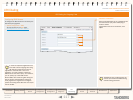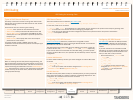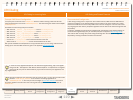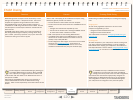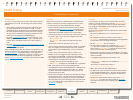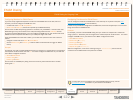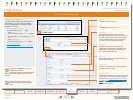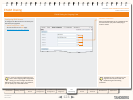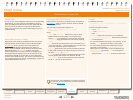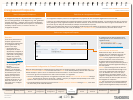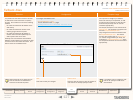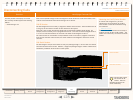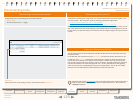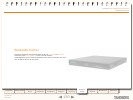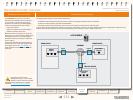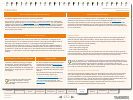
125
D14049.03
MAY 2008
Grey Headline (continued)
TANDBERG VIDEO COMMUNICATIONS SERVER
ADMINISTRATOR GUIDE
Introduction Getting Started
Overview and
Status
System
Conguration
VCS
Conguration
Zones and
Neighbors
Call
Processing
Bandwidth
Control
Firewall
Traversal
Maintenance Appendices
ENUM Dialing
Conguring DNS NAPTR Records
ENUM relies on the presence of NAPTR records, as dened by
RFC 2915 [7]. These are used to obtain an H.323 or SIP URI
from an E.164 number.
The record format that the VCS supports is:
order ag preference service regex
•
replacement
where:
order
•
and preference determine the order in which
NAPTR records will be processed. The record with the
lowest order is processed rst, with those with the lowest
preference being processed rst in the case of matching
order.
ag
•
determines the interpretation of the other elds in this
record. Only the value u (indicating that this is a terminal rule)
is currently supported, and this is mandatory.
service
•
states whether this record is intended to describe
E.164 to URI conversion for H.323 or for SIP. Its value must
be either E2U+h323 or E2U+SIP.
regex
•
is a regular expression that describes the conversion
from the given E.164 number to an H.323 or SIP URI.
replacement
•
is not currently used by the VCS and should
be set to . (i.e. the full stop character).
About DNS Domains for ENUM
ENUM relies on the presence of NAPTR records to provide the
mapping between E.164 numbers and their SIP/H.323 URIs.
RFC 3761 [8], which is part of a suite of documents that
dene the ENUM standard, species that the domain for
ENUM - where the NAPTR records should be located for public
ENUM deployments - is e164.arpa. However, use of this
domain requires that your E.164 numbers are assigned by an
appropriate national regulatory body. Not all countries are yet
participating in ENUM, so you may wish to use an alternative
domain for your NAPTR records. This domain could reside within
your corporate network (for internal use of ENUM) or it could use
a public ENUM database such as http://www.e164.org.
ENUM Dialing for Incoming Calls
Prerequisites
In order for your locally registered endpoints to be reached using
ENUM dialing, you must congure a DNS NAPTR record that
maps your endpoints’ E.164 numbers to their SIP/H.323 URIs.
This record must be located at an appropriate DNS domain
where it can be found by any systems attempting to reach you
via ENUM dialing.
Example
For example, the record:
IN NAPTR 10 100 "u" "E2U+h323" "!^(.*)$!h323:\1@
•
example.com!" .
would be interpreted as follows:
10
•
is the order
100
•
is the preference
u
•
is the ag
E2U+h323
•
states that this record is for an H.323 URI
!^(.*)$!h323:\1@example.com!
•
describes the conversion:
!
•
is a eld separator
the rst eld represents the string to be converted. In this
•
example, ^(.*)$ represents the entire E.164 number
the second eld represents the H.323 URI that will be
•
generated. In this example, h323:\1@example.com
states that the E.164 number will be concatenated with
@example.com. For example, 1234 will be mapped to
1234@example.com.
.
•
shows that the replacement eld has not been used.
Non-terminal rules in ENUM are not currently supported
by the VCS. For more information on these, see section
2.4.1 of RFC 3761 [8],



